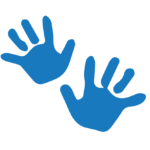HB Autism Summit
Autism Occupational Therapy
Resource Toolkit

Embracing Complexity & Individual Differences in Autism
What is Autism?
“Autism is part of the range of natural variation in human neurological development. At its very simplest, autism is a different way of thinking. Just like biodiversity helps to create a healthy and sustainable physical environment, neurodiversity can help to create a healthy and sustainable cognitive environment. According to the neurodiversity paradigm, there are no right or wrong brains. All forms of neurological development are equally valid and equally valuable”. – Dr. Jac den Houting.
This section contains resources describing autism which can create a base or build upon your foundational understanding and knowledge of autism.
From AutismSpeaks (2013) as defined by the APA, outlines the diagnostic criteria for Autism Spectrum Disorder (ASD)
Website that debunks common myths about autism and includes a video created by autistic advocates discussing these myths and their life experiences.
Tedx Talk by Dr. Jac den Houting discussing the neurodiversity paradigm, the social model of disability, the double empathy problem and how we can support authentic autistic identity.
Overview of ASD and resources. Based on the World Health Organization’s International Cassification of Functioning, Disability, and Health (ICF).
Dr. Anagnostou talks about the overlap between different disorders, the ethics of genetic research and how studies can help to improve treatments and interventions for autistic people people.
A thought-provoking podcast episode with guest Jill Escher, an autism research philanthropist, on navigating the complexities around the inclusivity of the autism diagnosis
Fascinating podcast episode with well known autism researcher and author Francesca Happe on autism and how autism presents differently in girls and women
A guide that outlines 7 support strategies for autistic individuals during uncertain times, specifically the COVID-19 pandemic. Guide includes visual supports and social stories.
Website hub for AccessOAP which describes OAP, outlines the difference between AccessOAP and OAP, and connects to the OAP Providers List.
Resource list containing what to do when waiting for an assessment of autism, and other autism support resources in Ontario.
Co-occuring Conditions
“Several medical or psychiatric conditions occur alongside autism. These are called co-occurring conditions. Nearly three-quarters of autistic children are diagnosed with a co-occurring condition. Co-occurring conditions can appear at any time during a child’s development. Some might not appear until later in adolescence or adulthood. Sometimes these conditions affect how autism therapies and supports help your child. That’s why it’s important to identify and diagnose the conditions and manage them separately.” – Raising Children Network
Below is a list of resources that describe the commonly co-occuring conditions with autism, and provides ideas for support strategies.
Autism can often come with other conditions. This guide discusses 16 common co-occuring conditions for children diagnosed with ASD.
What to expect with autism, low mood and depression, signs and symptoms, and strategies to help.
Signs of anxiety in children and youth with ASD, anxiety triggers and how to identify them, calming and relaxing strategies, and how to help children and youth diagnosed with ASD recognize anxiety.
An excellent and comprehensive mental health resource toolkit for service providers.
Looking at a range of physical conditions that are often accompanied with autism.
A podcast episode which discusses the benefits and limitations of Spoon Theory to help understand and manage fatigue.
Autism and Intersectionality
“Intersectionality is a term that describes how an individual can experience a variety of identities…Being autistic might form a major part of your identity. Race, ethnicity, sexuality, and gender are all different areas which may also form a variety of identities for you. For example, you may identify as being autistic but you may also identify as being a member of the black community and the LGBTQ+ community. Having these different identities means that you will experience the world different to other people.” – As I Am
Below is a list of resources which describes the identity of being an autistic person along with other identities.
Website which describes intersectionality and the identity of being autistic as well as other identities (race, gender, sexuality, and ethnicity).
A video discussing autism from an indigenous perspective.
A video discussing autism from an indigenous perspective.
A sexuality and sex education resource guide for people on the autism spectrum.
Brief article written by Autism Speaks outlining a study that finds higher rates of gender diversity among autistic people.